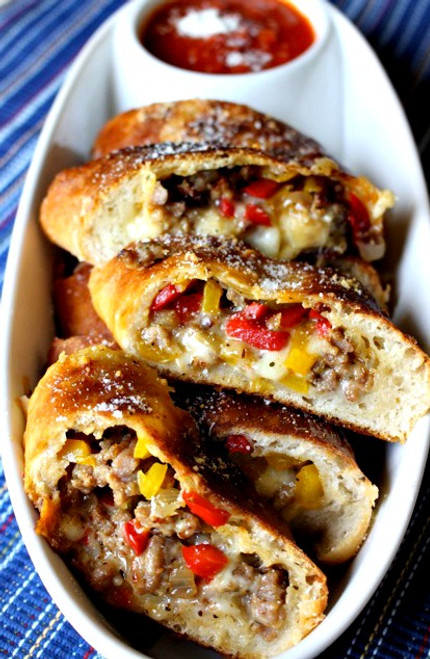INGREDIENTS
- 1 cup finely chopped pitted prunes
- 1 cup brandy
- 6 tablespoons unsalted butter
- Turkey giblets from one turkey, minced
- 2 tablespoons minced garlic
- 1 cup finely chopped onion
- 1 cup finely chopped celery
- 1 cup finely chopped peeled chestnuts
- 1 cup cooked (removed from casing) chopped mild venison, lamb, chicken, or pork sausage
- 4 large eggs
- 1 cup heavy cream
- 1 1/2 pounds sourdough bread, crust removed and cubed
- 2 tablespoons thinly sliced sage leaves
- 1/4 cup olive oil
- All-purpose flour, for dredging
DIRECTIONS
-
Place prunes in a small bowl; add brandy and set aside.
-
Melt butter in a large skillet over medium heat until foamy. Add turkey giblets and increase heat to medium-high. Cook, stirring, for 10 seconds; season with salt and pepper. Reduce heat to medium and add garlic, onion, and celery; cook, stirring, until fragrant and translucent, about 5 minutes.
-
Drain prunes, reserving brandy, and add to skillet along with chestnuts and sausage; cook, stirring, until sausage is cooked through and well combined. Add reserved brandy to skillet and cook, stirring and scraping up browned bits with a wooden spoon; let cook until liquid has evaporated. Remove from heat and let cool slightly; season sausage mixture with salt.
-
In a large bowl, whisk together eggs and cream until well combined. Add bread and sage; toss to coat. Add sausage mixture and stir to combine.
-
Prepare a large ice-water bath and set aside. Lightly sprinkle work surface with water; top with two 2 1/2-feet-long pieces of plastic wrap, slightly overlapping one another. Spoon half of the bread mixture onto plastic wrap near one long side. Using clean hands, form bread mixture into a 3-inch-thick log. Fold plastic wrap over the top of the log and roll up in plastic to enclose. Twist ends tightly to enclose, then tie together to create a secure cylinder. Transfer to ice-water bath. Repeat process with a second 2-foot-long piece of plastic wrap and remaining bread mixture. Bread cylinders should be kept in ice-water bath, refrigerated, for 30 minutes.
-
Preheat oven to 225 degrees. Fill a large Dutch oven with very hot water. Transfer Dutch oven to oven until water reaches 150 degrees. Place bread cylinders in Dutch oven and cover. Cook until internal temperature of stuffing reaches 140 degrees on an instant-read thermometer, about 1 hour. Meanwhile, prepare a large ice-water bath.
-
Remove bread cylinders from Dutch oven and transfer to ice-water bath; let cool 1 hour. Use immediately or transfer to refrigerator until ready to serve, up to overnight.
-
To serve, preheat oven to 375 degrees. Slice each bread cylinder into 1 1/2-inch-thick rounds, unwrapping cylinder as you slice.
-
Working in batches, heat oil over medium-high heat in a large, ovenproof skillet. Dredge each bread round with flour, shaking off excess, and place in skillet; cook until browned on bottom. Turn, and transfer to oven; continue cooking until opposite side is browned, about 5 minutes more. Transfer stuffing rounds to a paper towel-lined baking sheet to drain. Serve immediately.







